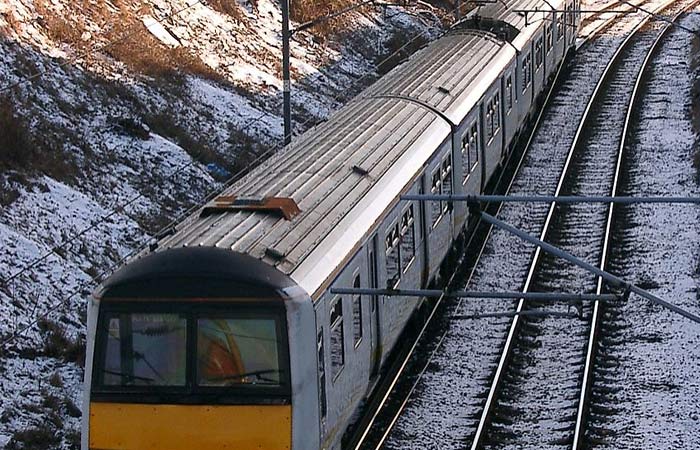
86 17344894490
service@chalcoaluminum.com
- Aluminum Forgings for Rail Vehicles
- Aluminum plate sheet for rail Rail vehicles
- Aluminum Profile for Rail Vehicles
Aluminum alloy in rail transportation
Aluminum alloy has been widely used in rail transit equipment products in various countries because of its light weight, corrosion resistance and good formability. Aluminum alloy in rail transportation mainly includes car body and parts with lightweight demand.

Aluminum alloy in rail transportation
Aluminum alloy car body
The development of large aluminum alloy profile production technology makes it possible for train modernization and lightweight. For rail vehicles, the weight of vehicle body structure accounts for about 15% ~ 30% of the weight of the whole vehicle. Therefore, vehicle body weight reduction is of great significance to vehicle speed increase. In Japan, 6n01 alloy (6005 alloy) with better extrusion performance, welding performance and stress corrosion resistance has been developed
The complex thin-wall porous hollow profile produced by gold) has successfully replaced 7N01 and 7003 profiles and is widely used in the structure of car body floor, side plate and roof. In Europe and America, al-mg-si6005a extruded profile with good extrusion performance and simplified production process is mainly used for aluminum alloy car body, which effectively solves the problem of stress corrosion on the premise of maintaining strength. In addition, 6061, 6063, 6082 and 6085 extruded profiles have gradually been popularized. In terms of body plates, 5083 deformed aluminum alloy is the most widely used.
The research on aluminum alloy car body in China started late. In 1989, Changchun Bus Factory developed the first subway train with aluminum alloy body in China. The car body adopts plate beam structure, which has complex process and high cost and has not been popularized on a large scale. In 1996, the former Ministry of Railways organized the development of ice2 aluminum alloy car body and manufactured the first mixed structure aluminum alloy car body in China, which promoted the technical development of aluminum alloy profiles for vehicles by domestic enterprises. In 2001, Changchun Bus Factory of CNR group built the first automatic production line of aluminum alloy car body in China, and developed and manufactured aluminum alloy car bodies of EMUs (210 km / h), high-speed test trains (270 km / h) and metro vehicles with domestic materials. CSR Nanjing Puzhen rolling stock factory, Zhuzhou Electric Locomotive Factory and CSR Tangshan rolling stock factory have also established production lines and began to produce aluminum alloy car bodies. In 2007, the aluminum alloy car body of 300 km / h EMU independently designed and manufactured by Qingdao Sifang locomotive and rolling stock Co., Ltd. was successfully offline. Up to now, the R & D and manufacturing technology of aluminum alloy car body in China has ranked among the advanced in the world and is widely used in rail transit equipment such as EMU and subway train
Aluminum alloy parts
With the upgrading of rail transit equipment, its weight reduction is not limited to the car body, and more parts made of traditional steel materials have been replaced by new high-strength aluminum alloys. At present, the gear box, air spring support, axle box body, motor end cover and other parts of ice in Germany, Shinkansen in Japan and TGV in France are generally made of high-strength aluminum alloy. The "Blue Arrow" and "China Star" high-speed trains developed during the ninth five year plan also use a large number of hollow floors, side baffles, motor end covers, motor fans, gear boxes, etc. made of aluminum alloy materials. With the continuous development of rail transit equipment in the direction of high speed and heavy load, there is an urgent demand for lightweight bogie components such as traction motor, wheel set, transmission plate, axle box body and traction rod. Cast aluminum alloy and forged aluminum alloy are increasingly widely used in these components, and forged aluminum alloy has more advantages in strength, elongation and impact toughness. The materials used for aluminum alloy forgings are mainly 2A14, 6082 and 7050, 2A14 aluminum alloy
The forging has moderate strength after heat treatment and is suitable for parts with large load; 6082 aluminum alloy forging has good welding performance and is suitable for parts that need to be welded with other parts [13]; 7050 aluminum alloy forgings have excellent comprehensive mechanical properties and stress corrosion resistance, and are suitable for dynamic load parts.
In addition, 7050 high-strength aluminum alloy is also used to produce the key part of the wheel set hollow shaft drive device - drive plate. The traditional transmission plate structure is a large steel forging with a mass of 100 kg. After using aluminum alloy, the mass is only about 35 kg. As an important part of the unsprung mass of the bogie, its weight reduction plays an obvious role in improving the dynamic performance of the whole vehicle.

Free offer of products, welcome to consult at any time, we will give the first reply.Our Email:
